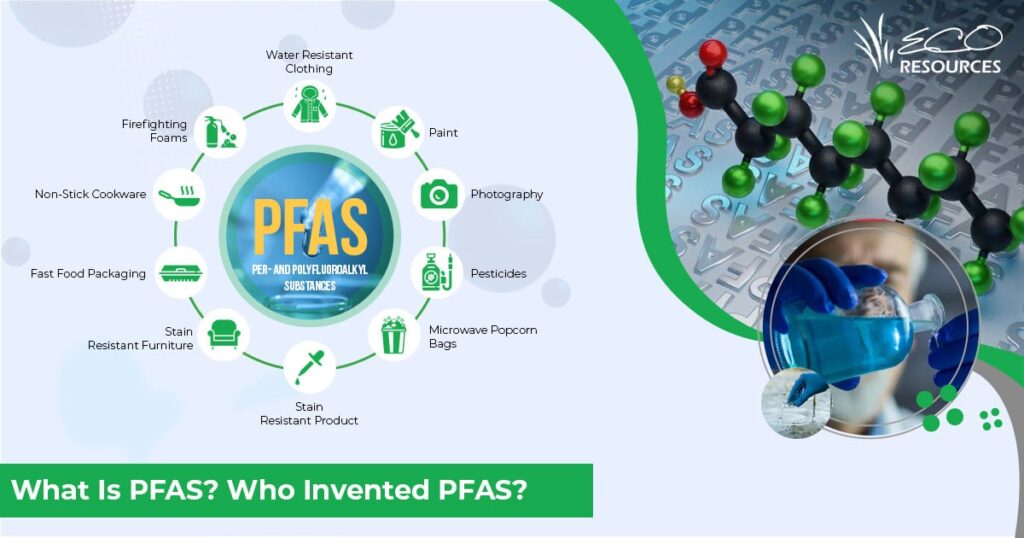PFAS, short for per- and polyfluoroalkyl substances, is a group of over 4000 chemicals that have been in use since the 1950s. You can find PFAS in various everyday items such as:
- Non-stick cookware
- Stain-resistant fabrics
- Furniture coatings
- Food packaging
- Firefighting foams
These substances pose a significant challenge due to their persistence in the environment, meaning they stick around for a long time after use, causing potential harm.
What Is PFAS?
PFAS enters the environment primarily through landfill sites where products containing these chemicals end up. From there, they seep into the ground and surface water, leading to contamination.
Several investigations are ongoing globally, including in Australia, to understand and address PFAS contamination. Exposure to PFAS raises concerns about its impact on human health and wildlife.
Who Invented PFAS?
The story of PFAS traces back to DuPont’s invention of Teflon, a non-stick coating. However, it was 3M that became the main manufacturer of PFAS compounds.
In 1947, 3M invented a specific PFAS compound known as perfluorooctanoic acid (PFOA), also called C8.
How to Avoid PFAS?
To minimise exposure to PFAS, here are some practical steps you can take:
- Avoid Stain-Resistant Coatings
Stay away from products with Scotchguard or Goretex coatings. Opt for darker colours or polyester/plastic-based fabrics that are naturally stain-resistant. - Check Labels
Look out for PTFE or “perfluor” in the ingredient list of cosmetics, varnishes, and household items. - Demand Non-PFAS Clothing and Sports Gear
Support companies moving away from forever chemicals in their products. - Reject Forever Chemicals-Coated Dental Floss
Choose dental floss that doesn’t contain forever chemicals. - Ask For Untreated Carpet
When buying carpet, opt for forever chemicals-free alternatives. - Pop Your Corn
Skip microwave popcorn bags and popcorn on the stove or in a covered bowl in the microwave. - Bring Your Container for To-Go Food
Use metal or glass containers for leftovers, and avoid foods in grease-resistant packaging. - Check Water Testing Results
Contact your water supplier to know about forever chemicals levels and consider installing a water filtration system. - Avoid Fish From Contaminated Waterways
Check with your state or tribal fish advisory programs to know which waterways to avoid. - Install Home Water Treatment
Consider using certified reverse osmosis systems or activated carbon filters to reduce forever chemical levels in your water.
Where Does It Come From?
Despite their widespread use, it’s crucial to take proactive steps to reduce forever chemical exposure. Ongoing research, advocacy efforts, and governmental regulations are essential to address forever chemical contamination and protect public health.
Stay informed, support companies adopting PFAS-free practices, and advocate for sustainable alternatives. In conclusion, forever chemicals are a complex issue with significant environmental and health implications.
By being mindful of our choices and advocating for change, we can work towards reducing the impact of forever chemicals on our lives and the planet. Take action today, and join initiatives like Eco Resources in Western Australia (WA) to promote sustainable practices and minimise the use of forever chemicals.
Together, we can make a difference!









